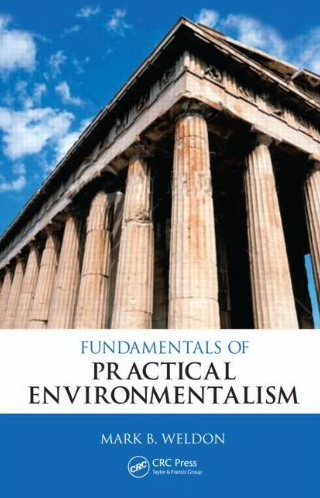Also See: Editor's Note, Endorsements, and Purchase Information

TABLE OF CONTENTS
List of Figures
List of Tables
Preface
Acknowledgment
Chapter 1: An Introduction to Practical Environmentalism and the Four Pillars
References
Chapter 2: A Short History of Environmentalism in the United States
References
Chapter 3: The Ethics of Environmenalism
Issue-Driven Environmentalism
Process-Based Environmentalism
Regulatory Environmentalism
Protest Environmentalism
Perspective-Based Environmentalism
The Nonbeliever
The Live Earth
Spaceship Earth
Back to Nature
Doomsday
Anticonsumption
Cornucopia
References
Chapter 4: The Confounding Factors
Competing Objectives
Uncertainty
Measures of Success
Fallacy of Prediction
Assumption of Future States
The Problem with Percentages
History of Paranoia
Crisis Mentality
References
Chapter 5: Environmental Degradation—The First Pillar
References
Chapter 6: Resource Conservation—The Second Pillar
References
Chapter 7: The Human Pillars of Economic Progress & Personal Benefit
Economic Progress
Personal Benefit
References
Chapter 8: Scoring with the Pillars—A few Simple Examples to Illustrate the Method
References
Chapter 9: The Pillars in Daily Life
References
Chapter 10: The Pillars and the Really Big Issues
References
Chapter 11: More Really Big Issues—The Sacrificial Ones
References
Chapter 12: The Pillars and Global Warming
References
Chapter 13: Other Measures of Environmental Performance
Carbon Footprint
Carrying Capacity
Life-Cycle Costing
Government and Scientific Reports
Green Accounting— ISEW(Index of Sustainable Economic Welfare)
Simple Monetary Economics
References
Chapter 14: Some Final Thoughts (Return to Top of Page)
References
Index
Editor's Note for the "CRC Press" Book Series, Social-Environmental Sustainability:
In the preface to this book, Mark Weldon has touched eloquently and firmly on the "waterbed principle" of life. Namely, like a waterbed, nothing in life can be touched without affecting everything in life, because every thought we humans have explodes into the world as a never-ending story of cause and effect. Moreover, every thought that translates into an action becomes the legacy we bequeath all generations onto everlasting. The outcome of our actions, in terms of cause and effect, become the consequences that, in tern, shape the world of the future in all its many ramifications.
Consider, for example, that living organisms (which collectively form the species that collectively form the communities as they spread over the land and fill the seas) join the myriad constituents of diversity itself, such as the scales of time, space, and temperature, and the processes that shape the Earth. Together, the nonliving, physical elements and the living organisms have molded and remolded the earthscape in an ever-changing kaleidoscope. These organisms, through the exchange medium of the soil, are influenced by short-term ecological limitations even as they influence those same limitations through their life cycles. The interactions of communities and soil are controlled and influenced by the long-term dynamics that coincidentally form the three, interactive spheres of our earthscape: the atmosphere (air), the litho-hydrosphere (the rock that constitutes the restless continents and the water that surrounds them), and the biosphere (the life forms that exist within the other two spheres).
We humans, however, arbitrarily delineate our seamless world into discrete ecosystems as we try to understand the fluid interactions between nonliving and living components of planet Earth. If you picture the interconnectivity of the three spheres as being analogous to the motion of the above-mentioned waterbed, you will see how patently impossible such divisions are because you cannot touch any part of a waterbed without affecting the whole of it.
Social-environmental sustainability is our individual and collective life's journey—not an achievable endpoint because change is a constant process that endows all life with eternal novelty, the tradeoff being that nothing is reversible. Mark's excellent book is a practical roadmap of positive actions we all can take to pass social-environmental sustainability foreword as our unconditional gift to all generations. The choice is ours—yours and mine. How shall choose?
Chris Maser, Series Editor
(Return to Top of Page)
Endorsements: